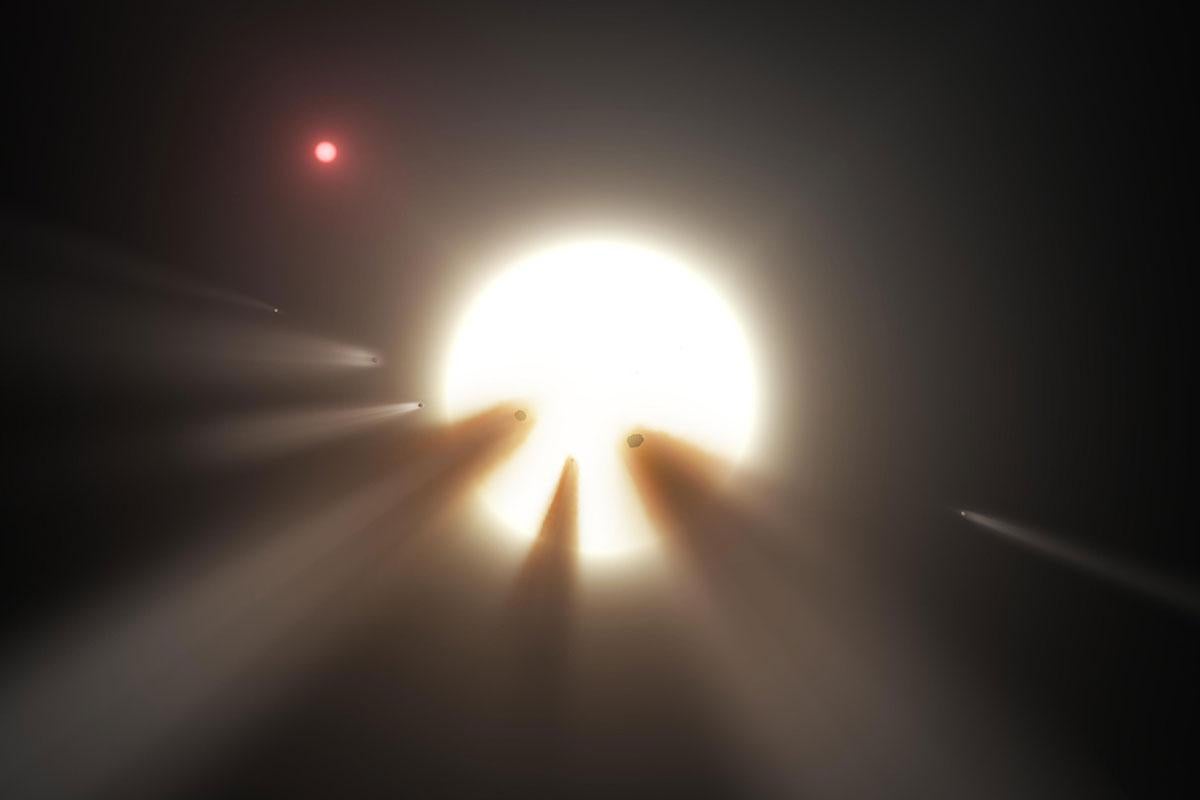‘Alien megastructures’ star baffles scientists as new study fails to explain strange behaviour
The best explanation that doesn’t involve aliens is getting less and less convincing

Your support helps us to tell the story
As your White House correspondent, I ask the tough questions and seek the answers that matter.
Your support enables me to be in the room, pressing for transparency and accountability. Without your contributions, we wouldn't have the resources to challenge those in power.
Your donation makes it possible for us to keep doing this important work, keeping you informed every step of the way to the November election

Andrew Feinberg
White House Correspondent
A star that has such strange characteristics that it made some people think it was proof of intelligent aliens is still baffling scientists.
Last year, astronomers announced that the star, named KIC 8462852, was intermittently dimming in a way that wasn’t expected and couldn’t be explained. The behaviour was so strange that it led some to argue that it could be a sign that aliens were getting in the way of it – but others argued that it might be something less spectacular, like large comets that were orbiting it.
A new study from the Carnegie Institution in Washington DC has failed to give an easy explanation for the star’s unexpected behaviour. It found that the star is changing in brightness both at a rapid pace, but also at a steady rate over the last four years.
The dimming doesn’t appear to be the result of solid objects like planets or dust clouds passing in front of the star, the study indicates. Objects passing in front of the star explain the quick dimming, but not the much longer-term, slower behaviour.
Scientists found that the star has been getting gradually less bright in the last months. They found that the star had dimmed 2 per cent in the last six months that it was being watched by the Kepler space telescope, which found the star.
“The steady brightness change in KIC 8462852 is pretty astounding,” said astronomer Ben Montet. “Our highly accurate measurements over four years demonstrate that the star really is getting fainter with time. It is unprecedented for this type of star to slowly fade for years, and we don’t see anything else like it in the Kepler data.”
The sudden dimming might be caused by a collision or broken up object, like a planet or comet, the leftovers of which are now flying through the solar system and in front of the star.
But that doesn’t seem to explain the far more long term dimming that has been seen over the past three years. Some measurements going as far back as the 19th century seem to indicate that the star has been dimming for much longer than that, too.
When the star’s strange behaviour was first spotted, some more enthusiastic watchers speculated that it could be the result of a Dyson sphere – a huge object built around the star to harvest light from it. That would explain the gradual dimming, some people claimed, since the construction would take even the advanced civilisation that would be required to make it many years to put together.
But others have looked to advance more expected explanations, like debris from a comet or an unusual physical situation.
Subscribe to Independent Premium to bookmark this article
Want to bookmark your favourite articles and stories to read or reference later? Start your Independent Premium subscription today.
Join our commenting forum
Join thought-provoking conversations, follow other Independent readers and see their replies
Comments